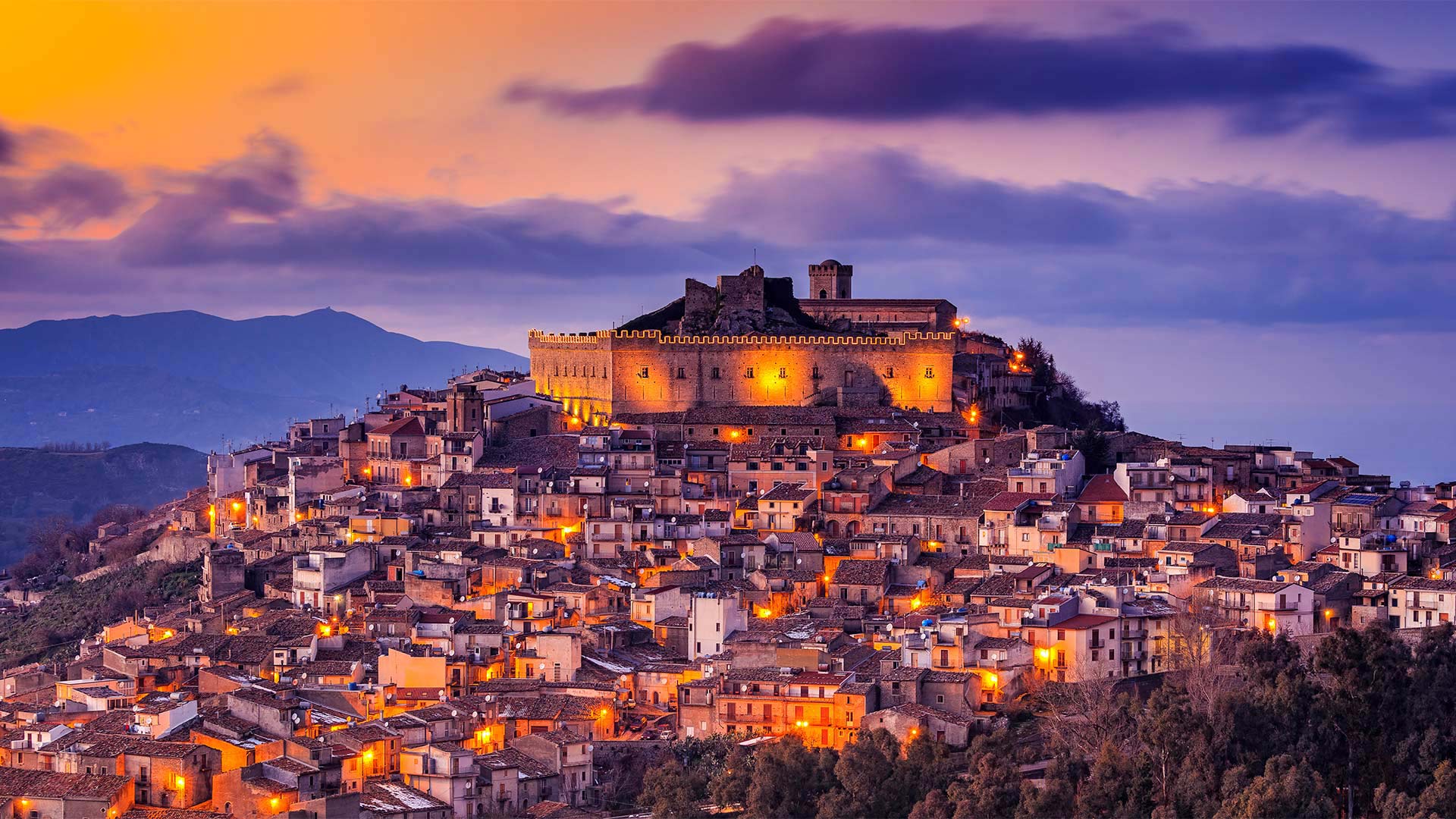蒙塔尔巴诺埃利科纳,意大利西西里岛 Montalbano Elicona, Messina, Sicily, Italy (© Antonino Bartuccio/SOPA Collection/Offset by Shutterstock)

蒙塔尔巴诺埃利科纳,意大利西西里岛 Montalbano Elicona, Messina, Sicily, Italy (© Antonino Bartuccio/SOPA Collection/Offset by Shutterstock)
In Sicily, history is everywhere
Today we're in Montalbano Elicona on the island of Sicily. It's known for the very old castle at the crest of the hill, as well as the quaint medieval village below. It's no wonder that Montalbano Elicona has been called one of the most beautiful towns in all of Italy. The castle itself is believed to have been built in the 13th century by medieval power broker Frederick II of Swabia. He wore many hats, including King of Sicily, Holy Roman Emperor, and—as far-fetched as it sounds—the King of Jerusalem, a title he claimed after conquering that city during the Sixth Crusade. The castle was originally designed as a fortress, but it also served as a summer residence for Frederick and other rulers who followed him.
Surrounding the castle are several other interesting historical sites, including the Church of St. Catherine, known for its Romanesque portal built in the 14th century, its mix of Catalan and renaissance architecture, marble statues of St. Catherine and St. Nicholas Bishop, and a representation of the Last Supper by artist Guido Reni. Also of note is the nearby Argimusco plateau, where an array of large oblong stones, including one which is said to resemble an eagle, have long prompted speculation that they were placed there by members of a prehistoric island culture. However, scientists now believe that these so-called megaliths of Argimusco, sometimes referred to as the Stonehenge of Sicily, are actually of natural origin, and the unique boulder shapes are simply the result of centuries of wind erosion.
在西西里,历史无处不在
今天我们在西西里岛上的蒙塔尔巴诺埃利科纳。它以山顶上非常古老的城堡以及下面古色古香的中世纪村庄而闻名。难怪蒙塔尔巴诺·艾利科纳被称为意大利最美丽的城镇之一。城堡本身被认为是建于13世纪的中世纪权力掮客弗雷德里克二世的斯瓦比亚。他戴着许多帽子,包括神圣罗马皇帝西西里国王,以及听起来很牵强的耶路撒冷国王,这是他在第六次十字军东征中征服耶路撒冷后获得的头衔。这座城堡最初是作为要塞设计的,但它也作为弗雷德里克和其他跟随他的统治者的避暑住所。
城堡周围还有其他一些有趣的历史遗迹,包括圣凯瑟琳教堂(Church of St.Catherine),因其建于14世纪的罗马式大门而闻名,它融合了加泰罗尼亚和文艺复兴时期的建筑,圣凯瑟琳和圣尼古拉斯主教的大理石雕像,以及艺术家吉多·雷尼(Guido Reni)对《最后的晚餐》的描绘。同样值得注意的是附近的阿尔吉穆斯科高原,那里有一排长方形的大石头,其中一块据说像鹰,长期以来一直有人猜测它们是史前岛屿文化的成员放在那里的。然而,科学家们现在认为,这些所谓的阿吉姆斯科巨石,有时被称为西西里巨石阵,实际上是自然起源的,这些独特的巨石形状只是几个世纪风蚀的结果。
评论已关闭